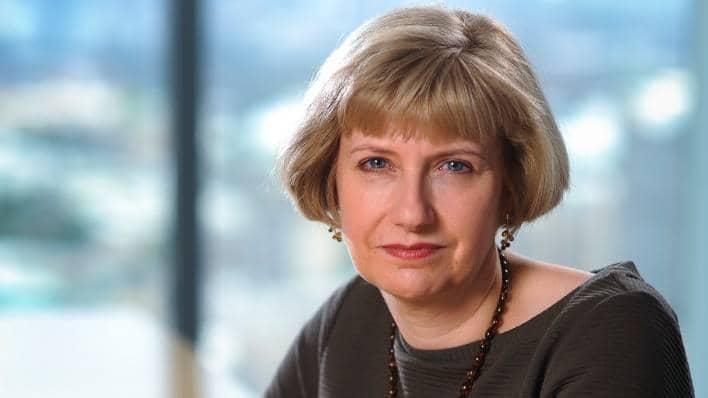
Improving lives in Africa
Susan Payne is leading a unique collaboration between Barclays and healthcare company GSK to transform lives in Africa

James Allan has worked for Barclays for more than 15 years in a variety of roles, recently heading up UK Cash Management for the Corporate Bank. In this role, he has passionately pushed forward the bank’s digital payments agenda.
It has been changing for many years, but the pace of change has really gained momentum over the last five years. This is especially true for digital payments. Because of the sheer size, volume and frequency of payments, consumers and corporates have willingly embraced digital solutions. This was driven by the rise in popularity of smartphones / mobile technology and an acceptance that there was a better and easier way to pay and be paid. Payments today are more secure, convenient and quicker than ever before, which is what consumers want and demand.
Whilst digital is growing, I still believe physical cash will remain important; it is the only universally accepted means of payment and is anonymous. Paper-based payment methods, such as cheques, bank drafts and postal orders are quite clunky for consumers and I have no doubt these options will be replaced by digital alternatives in the future. An example of this is cheque imaging – banking a cheque digitally – an initiative in which Barclays is leading the way in the UK.
I believe there were three main reasons for these changes. The first was the advent of faster payments in the UK, giving the ability to process, in a high frequency, low value payments in real time.
Secondly, these changes to the landscape happened alongside the emergence of new players. Fintech companies have championed the digital customer experience, making the payments process more efficient and streamlined, especially in apps or on the web. Traditional institutions have faced a wake-up call, which I think Barclays responded well to, and in some cases we’ve trail blazed ahead of our competitors, such as with Pingit.
Thirdly, and importantly, consumers are no longer passive when it comes to payments, and with the rise of new industry players, there is far more choice available for them. Expectations that ‘on the go’ solutions, linked back to smartphone usage, are the norm have enabled consumers to ‘walk with their feet’ if they’re not happy.
Ultimately the business which controls the client interface controls the client experience. Providing a digital wallet or bank account for a customer is incredibly powerful. We must always remain relevant, or customers simply won’t choose us. Being passive in this digital world would be an unwise strategy. This informs our thinking in our digital strategy and investments across Barclays and Barclaycard.
We also have an appetite to work with emerging fintech companies, many of which can benefit from our existing payments infrastructure. This enables a mutually beneficial relationship for both sides – we have the opportunity to work with some of the latest and most agile companies, and they can tap into our existing and extensive resources. What emerges is the creation of an ecosystem around Barclays’ payments infrastructure within which our fintech clients can prosper, enabling both sides in turn to do more business and reach more customers and clients.
I wish there was more commonality between payments in different countries. It can be incredibly complex, particularly when you consider the different regulations, currencies and payment infrastructures within the globalised economy.
When we compare ourselves to other countries I believe the UK is in a great space. We have a faster world-class payments infrastructure with BACS and CHAPS. We also have a large consumer base which actively adopts digital solutions. There is no single country I would say we should actively be following; in my view the UK leads the way. We do, however, monitor and learn from developments in payments across the world.
The balance will remain between physical cash and digital payments but simplification and ease of use will be key. Consumers demand relevancy – if they don’t understand something within a couple of seconds, they simply won’t use it. Similarly, given the potential fraud risks with paper-based payment options, there’ll need to be a clear use case to ensure these remain relevant and support the customer experience.
Yes. Barclays has been leading innovation in the payment space for quite some time. Some of our great firsts include setting up the first ATM, Barclaycard offering UK customers the first credit card, right through to being the first bank in the UK to create a digital peer to peer payments system. We also have an active Accelerator programme which is working with new and exciting fintech companies to foster and develop future innovations.

Susan Payne is leading a unique collaboration between Barclays and healthcare company GSK to transform lives in Africa

'The sharing economy' is one of the hottest topics in the business world, but do we really understand what the term means?

Growing up, if I wanted to speak to someone I would meet them face to face; if I needed to learn something, I would ask someone or look it up in a book; and when I needed to get somewhere new, I would use a map to navigate myself

Wendy Papworth is Director for Diversity & Inclusion (D&I) and also leads Barclays’ group-wide focus on the gender agenda